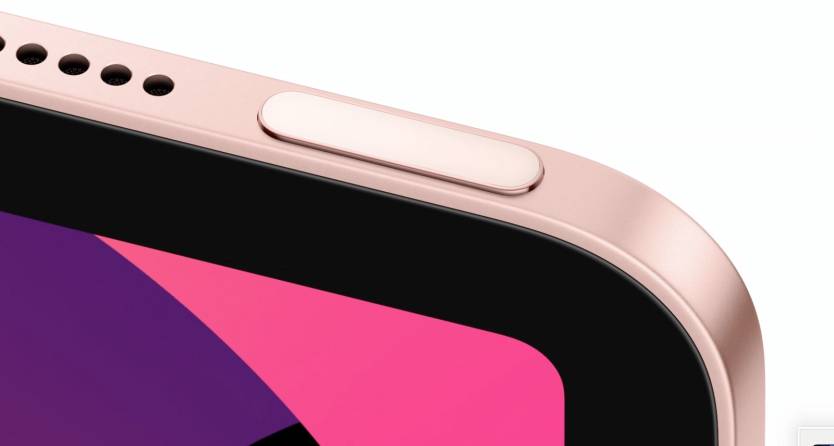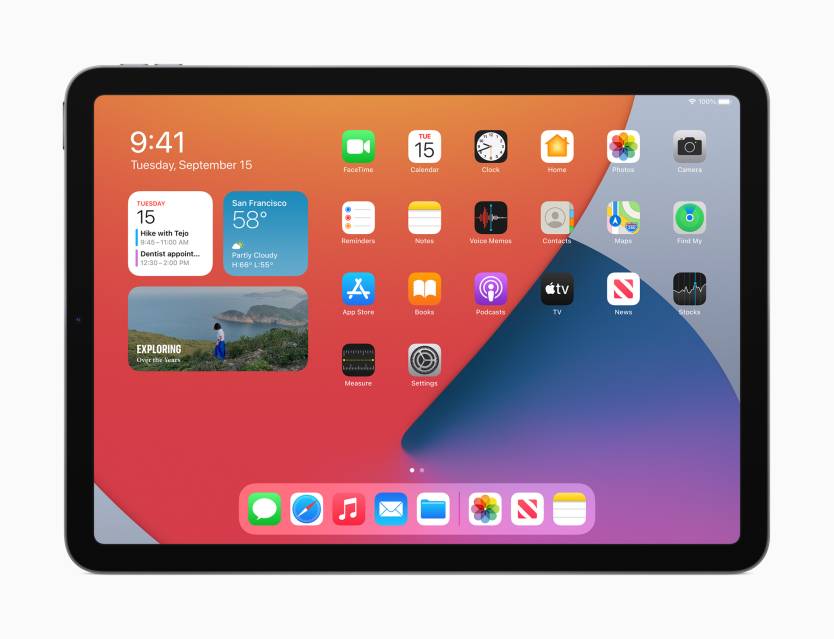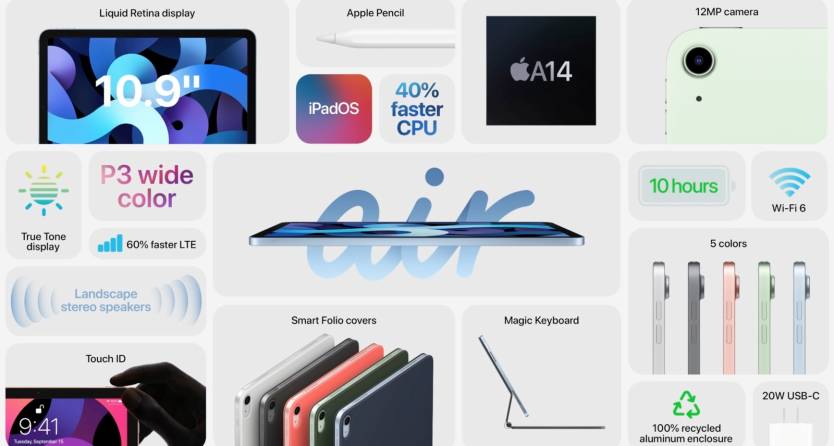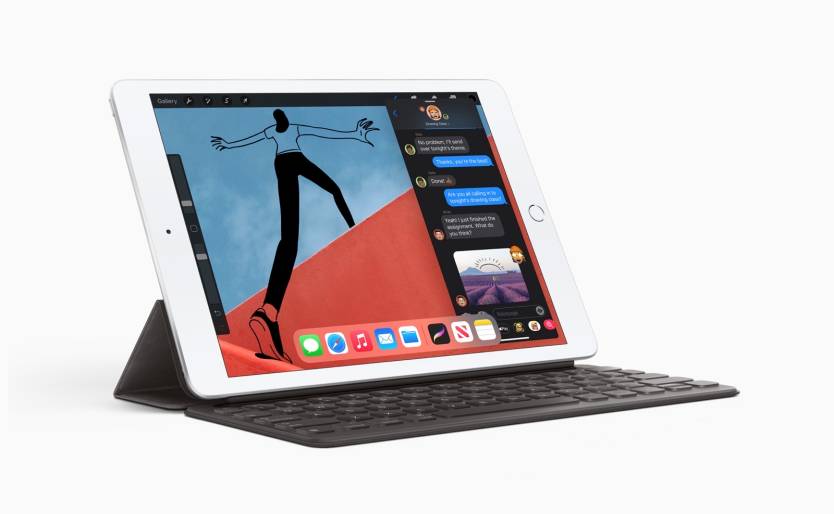Apple Just Launched An iPad That's Like Nothing We've Ever Seen Before
- Apple just updated its iPad line with two new tablets, including the iPad Air (4th generation) and iPad (8th generation).
- The iPad Air is the more exciting upgrade of the two, featuring an iPad Pro-like all-screen display, but without the Face ID 3D face recognition technology.
- The iPad Air features a Touch ID fingerprint sensor that's placed inside the power button at the top of the tablet, as well as high-end specs that make the mid-ranged tablet a lot more exciting.
Rumors said earlier this year that Apple would unveil a brand new iPad Air in 2020, which is precisely what we'd expect from the company. Apple refreshes the regular iPads every year, with the Pros taking a longer time between updates. But things got really interesting a few days ago when a leak said the 2020 iPad Air would deliver a couple of exciting upgrades that would make it stand out from the iPad crowd. The Air is a mid-range device that sits between the cheap iPad and the expensive iPad Pro. That means it's not quite as sophisticated as the Pro, but it's a much better proposition than the entry-level iPad. Apple made several compromises to hit that $499 price point last year, and things are getting even better with the new iPad Air refresh. The tablet just got a couple of exciting upgrades over last year's model, including a feature not seen on any other iPad — or iPhone, for that matter. The entry price was also bumped to $599, however.
The new iPad Air features a larger 10.9-inch display that takes after the iPad Pro. We have the same all-screen design in place, complete with uniform bezels around it. Gone is the Touch ID home button, but there's no Face ID on the Air. That's a pricey upgrade, and the Air should be cheaper than the Pro. The Touch ID button has been positioned elsewhere, which is a surprising move from Apple. The sensor is now built into the standby button at the top and will work just as before.

iPad Air 4th-generation Touch ID button.
The new Air doesn't just bring a significant display upgrade. The tablet also features USB-C connectivity and a Smart Connector on the back. It's as if the Air is getting closer to the iPad Pro than before, although the Air is still supposed to be more the much more affordable option. The ports upgrade makes the Air compatible with Apple's second-gen Apple Pencil and the brand new Magic Keyboard accessory.

iPad Air 4th-generation colors.
The processor is getting a bump to A14 Bionic, but storage starts at 64GB and runs up to 256GB. Pricing for the Wi-Fi version starts at $599, while the cheapest cellular model starts at $729. The new iPad Air will, of course, run the latest version of iPadOS out of the box, with iPadOS 14 set to launch soon.

iPad Air 4th-generation.
The iPad Air will actually be the first Apple device to feature the A14 chip, the world's first 5nm chip, which will later power the iPhone 12 phones. Compared to the previous generation iPad Air, the new six-core CPU is 40% faster, and the new four-core GPU is 30% faster. This is Apple's fastest chip made to date, making the Air faster than many laptops, according to Apple. The new Air might be even faster than the iPad Pro that launched earlier this year.

Main iPad Air 4th-generation specs and features.
Other specs include a 10.9-inch Liquid Retina Display, 12-megapixel primary camera, 7-megapixel FaceTime camera, Wi-Fi 6 connectivity, and 20W fast-charging support. The new iPad will be available in five different colors, including silver, space gray, rose gold, green, and sky blue.
The 2020 iPad Air will be available in stores next month, starting at $599.

iPad 8th-generation model.
Also launching today is a cheaper iPad model, the 8th-gen iPad that will keep in place the design Apple introduced a few years ago. We're looking at a 10.2-inch display and Touch ID home button for the new iPad, but you can expect a processor bump to A12 Bionic with Neural Engine support, a first for the cheapest iPad. Pricing starts at $329 for the 32GB Wi-Fi version, while the cheapest cellular version will cost you a $130 extra. The 2020 iPad is also available for preorder online.
